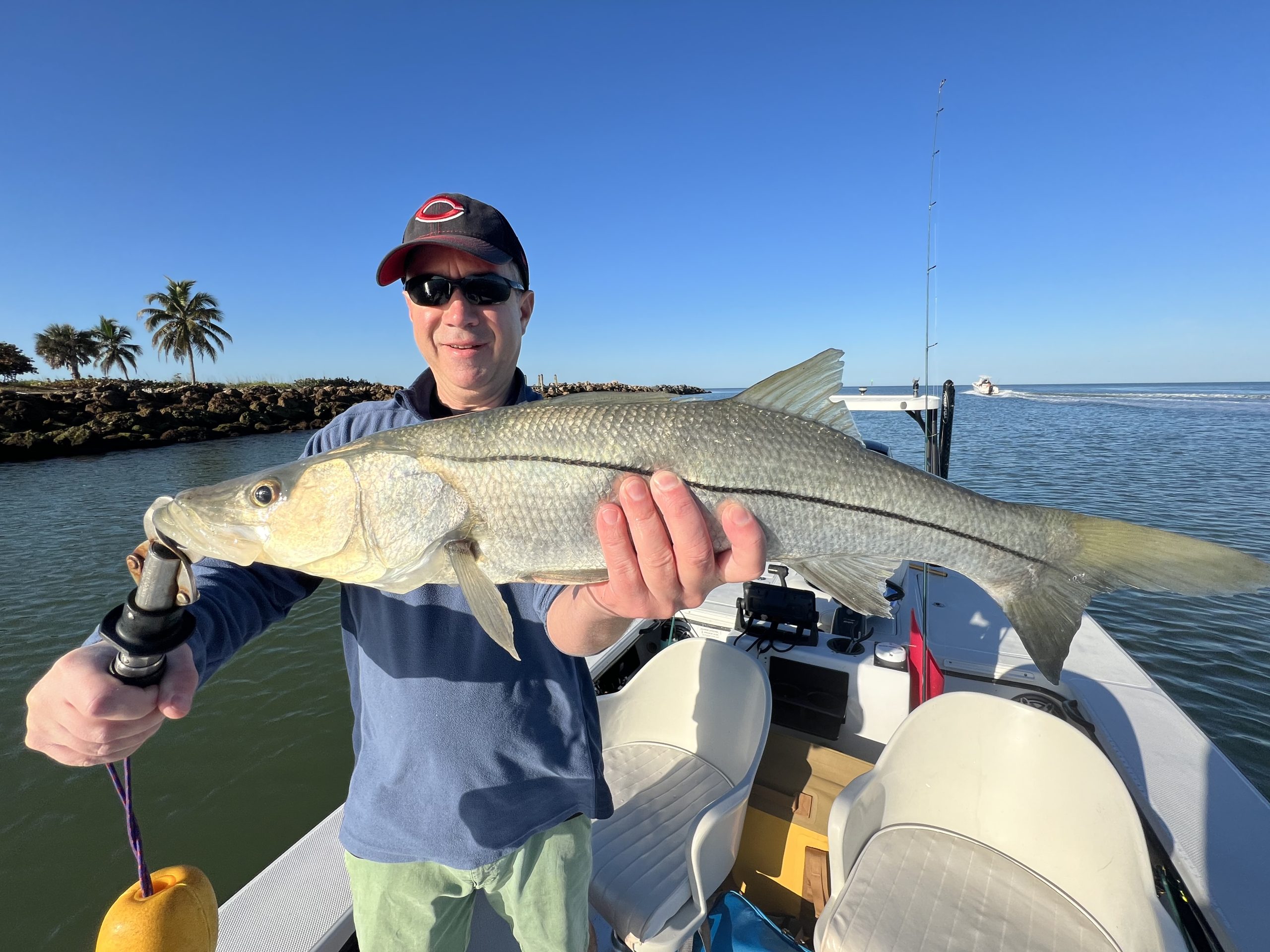The weather finally warmed up and the water temperature is now in the mid 70’s and climbing!
Consequently I’m starting to use live bait, live minnows (pilchards) again which sometimes catches bigger, better quality fish than shrimp or jigs.
Snook are becoming more active and I’m starting to catch them in the passes and adjacent bays as we progress into spring. Trout are still being caught on shrimp and live bait as well as pompano, snapper, a few redfish, sheepshead jacks and more.
I’ve started to see big tarpon in the backcountry as we usually do when the water hits the low 70’s in the spring. They will become more active as the waters continue to warm.
Sharks will also be in the same bays as the tarpon in the 50-75lb range. Black tips, lemons, nurse and bull sharks can all be caught in the backcountry this time of year.
Tarpon season is fast approaching with peak months May & June. Many days are already booked so call or text with questions or availability.
Learn More About Snook
Snook, known scientifically as Centropomus undecimalis, are a popular game fish found in the coastal waters of the western Atlantic Ocean. They are known for their aggressive strikes, strong fights, and delicious flesh. Here are some key points about snook biology:
- Appearance: Snook have a distinct appearance with a sloping forehead, large mouth, and a protruding lower jaw. They have a dark lateral line that extends from their head to their tail, which is a prominent feature.
- Habitat: Snook are typically found in warm coastal waters, including estuaries, mangrove shorelines, and tidal creeks. They prefer areas with structure such as rocks, docks, and submerged vegetation where they can ambush prey.
- Diet: Snook are opportunistic feeders and their diet varies depending on their size and habitat. They feed on a variety of prey including small fish, shrimp, crabs, and other invertebrates.
- Reproduction: Snook are protandric hermaphrodites, which means they can change sex from male to female as they grow older. They typically spawn in nearshore waters during the warmer months, with females releasing their eggs into the water column where they are fertilized by males.
- Growth: Snook grow relatively quickly, reaching sexual maturity at around 3-4 years of age. They can live up to 20 years and grow to sizes exceeding 4 feet and weighing over 50 pounds, although most caught by anglers are much smaller.
- Conservation: Snook populations face various threats including habitat loss, overfishing, and cold weather events. Due to these threats, snook are managed by fishing regulations in many areas to ensure sustainable populations.
May Tarpon Calendar

June Tarpon Calendar

The post Naples Florida Fishing Report by Capt. Mark Ward first appeared on Naples Fishing Charters with Capt. Mark Ward.
Source link


